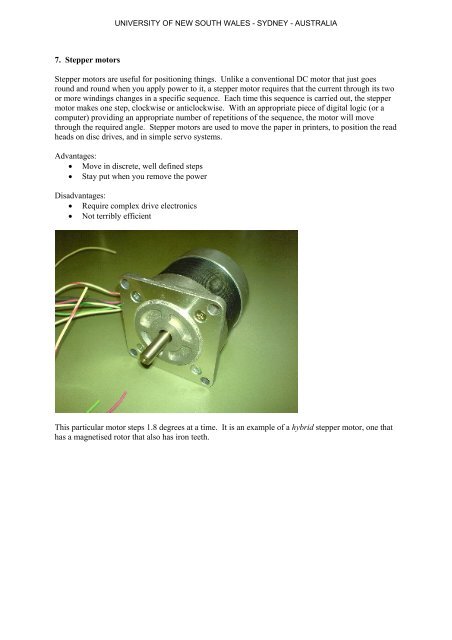How real electric motors work - School of Physics - The University of ...
How real electric motors work - School of Physics - The University of ...
How real electric motors work - School of Physics - The University of ...
Create successful ePaper yourself
Turn your PDF publications into a flip-book with our unique Google optimized e-Paper software.
UNIVERSITY OF NEW SOUTH WALES - SYDNEY - AUSTRALIA<br />
7. Stepper <strong>motors</strong><br />
Stepper <strong>motors</strong> are useful for positioning things. Unlike a conventional DC motor that just goes<br />
round and round when you apply power to it, a stepper motor requires that the current through its two<br />
or more windings changes in a specific sequence. Each time this sequence is carried out, the stepper<br />
motor makes one step, clockwise or anticlockwise. With an appropriate piece <strong>of</strong> digital logic (or a<br />
computer) providing an appropriate number <strong>of</strong> repetitions <strong>of</strong> the sequence, the motor will move<br />
through the required angle. Stepper <strong>motors</strong> are used to move the paper in printers, to position the read<br />
heads on disc drives, and in simple servo systems.<br />
Advantages:<br />
• Move in discrete, well defined steps<br />
• Stay put when you remove the power<br />
Disadvantages:<br />
• Require complex drive electronics<br />
• Not terribly efficient<br />
This particular motor steps 1.8 degrees at a time. It is an example <strong>of</strong> a hybrid stepper motor, one that<br />
has a magnetised rotor that also has iron teeth.
















